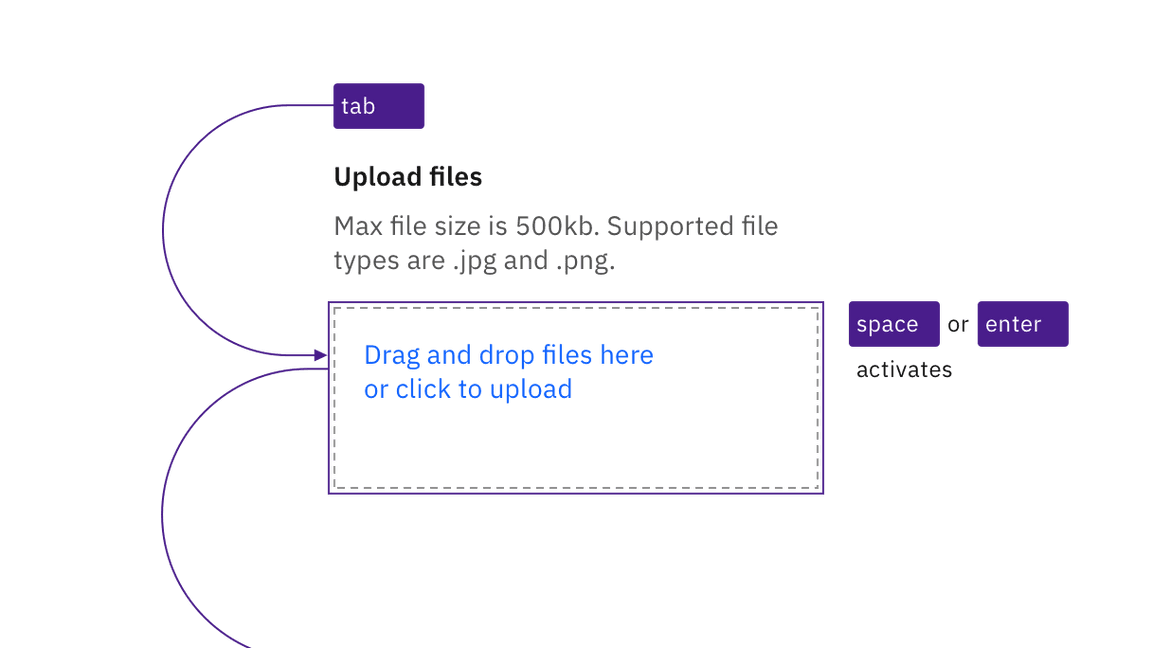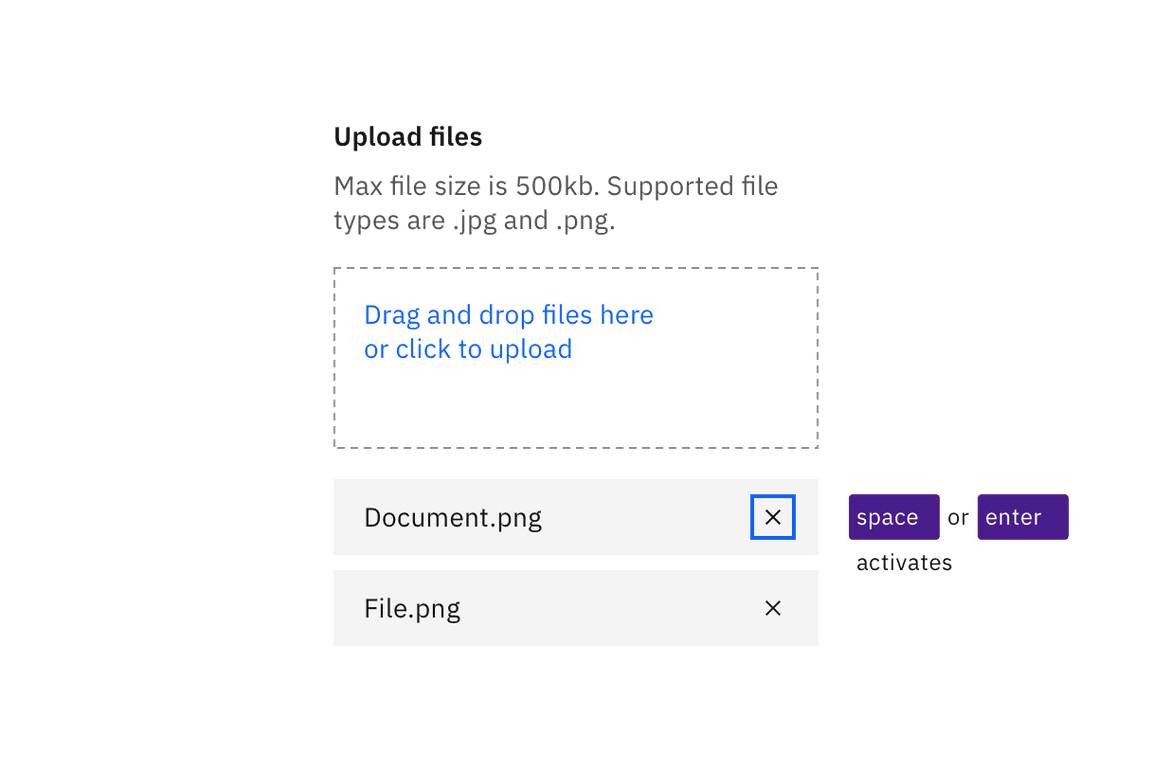File uploader
No accessibility annotations are needed for file uploaders, but keep these considerations in mind if you are modifying Carbon or creating a custom component.
What Carbon provides
Carbon bakes keyboard operation into its components, improving the experience of blind users and others who operate via the keyboard. Carbon incorporates many other accessibility considerations, some of which are described below.
Keyboard interactions
Both variants of the file uploader provide buttons for uploading and removing files. The drop target “Drag and drop files here…” also provides conventional button keyboard interaction (
Tab
Enter
Space

The drop zone is also a button that responds to standard keyboard interaction.

Uploaded files can be removed by tabbing to each “x” button and activating.
Development considerations
Keep these considerations in mind if you are modifying Carbon or creating a custom component:
- The ‘Drag files’ area is constructed as a button to support keyboard operation.
- Error messages about file uploads must be exposed to assistive technology.
- The Delete button needs to have the uploaded file name associated with it programmatically, so the user understands which file will be removed.
Accessibility testing statusFor every latest release, Carbon runs tests on all components to meet the accessibility requirements. These different statuses report the work that Carbon has done in the back end. These tests appear only when the components are stable.
For every latest release, Carbon runs tests on all components to meet the accessibility requirements. These different statuses report the work that Carbon has done in the back end. These tests appear only when the components are stable.
Latest version: | Framework: React (@carbon/react)
| Component | Accessibility test | Status | Link to source code |
|---|---|---|---|
| File uploader | Test(s) that ensure the initial render state of a component is accessible. | Passes all automated tests with no reported accessibility violations. | GitHub link |
| Tests that ensure additional states of the component are accessible. This could be interactive states of a component or its multiple variants. | Passes all automated tests with no reported accessibility violations. | ||
| Tests that ensure focus is properly managed, and all interactive functions of a component have a proper keyboard-accessible equivalent. | Passes all automated tests with no reported accessibility violations. | ||
| This manual testing ensures that the visual information on the screen is properly conveyed and read correctly by screen readers such as JAWS, VoiceOver, and NVDA. | A human has manually tested this component, e.g. screen reader testing. |